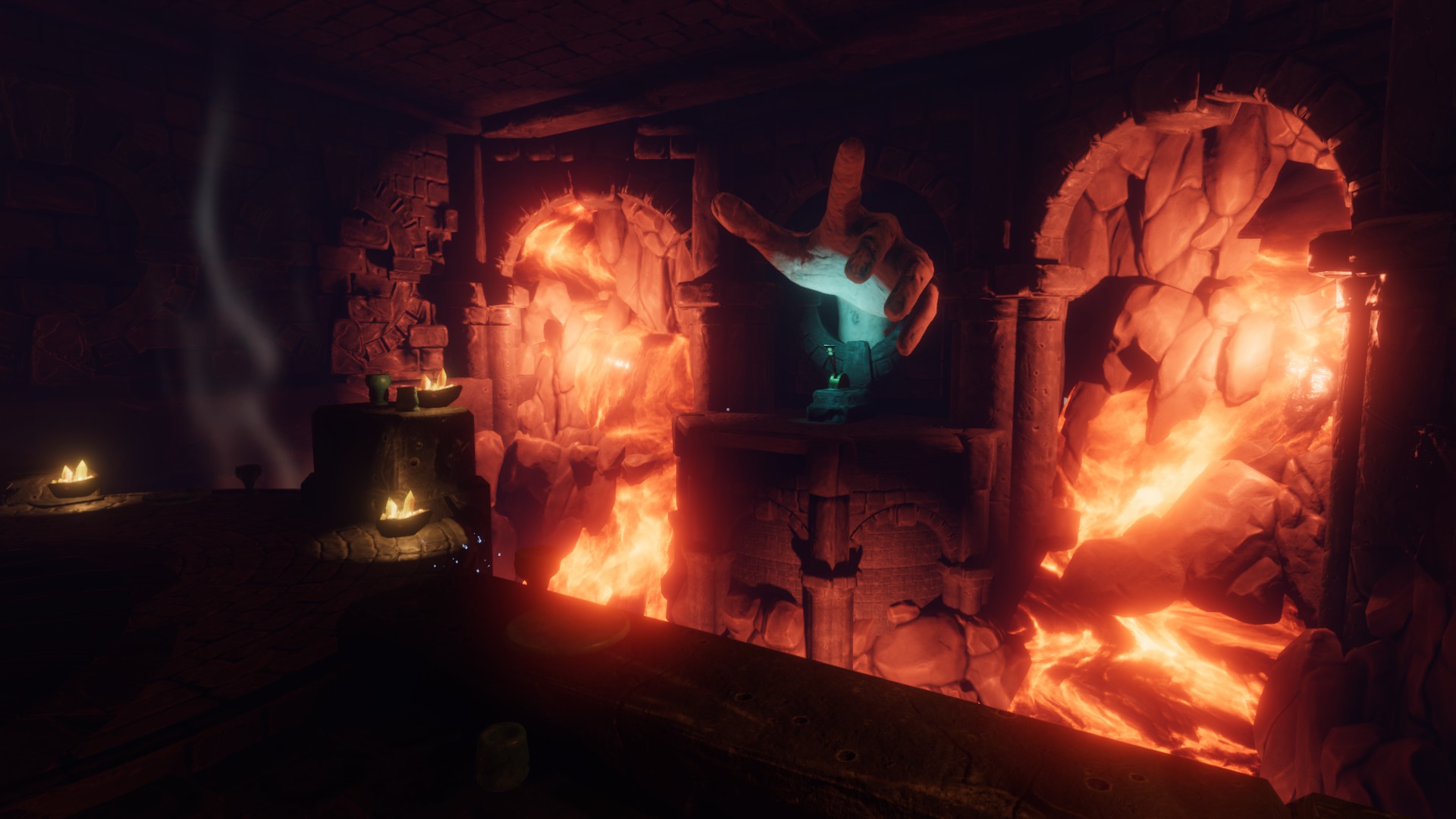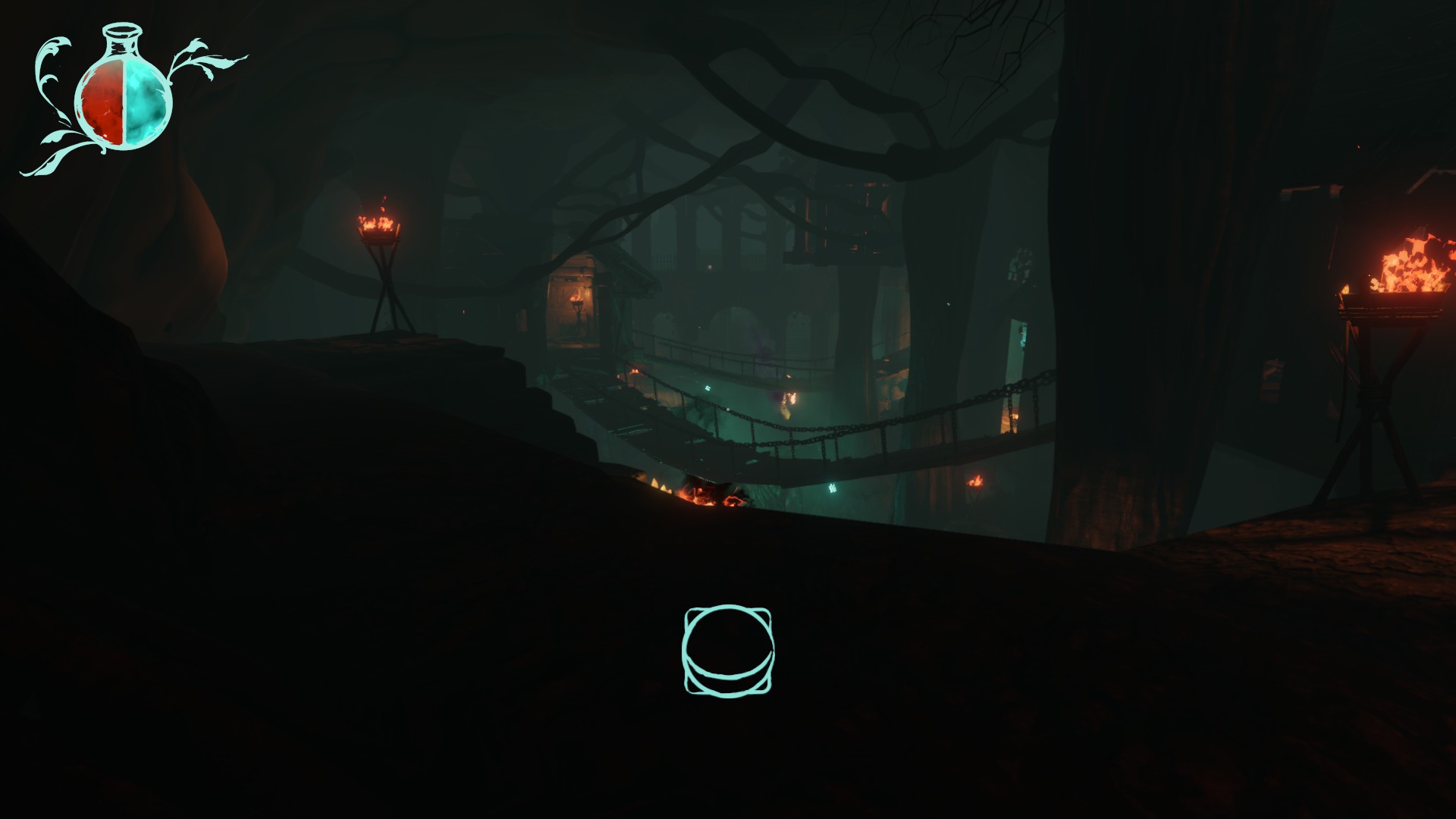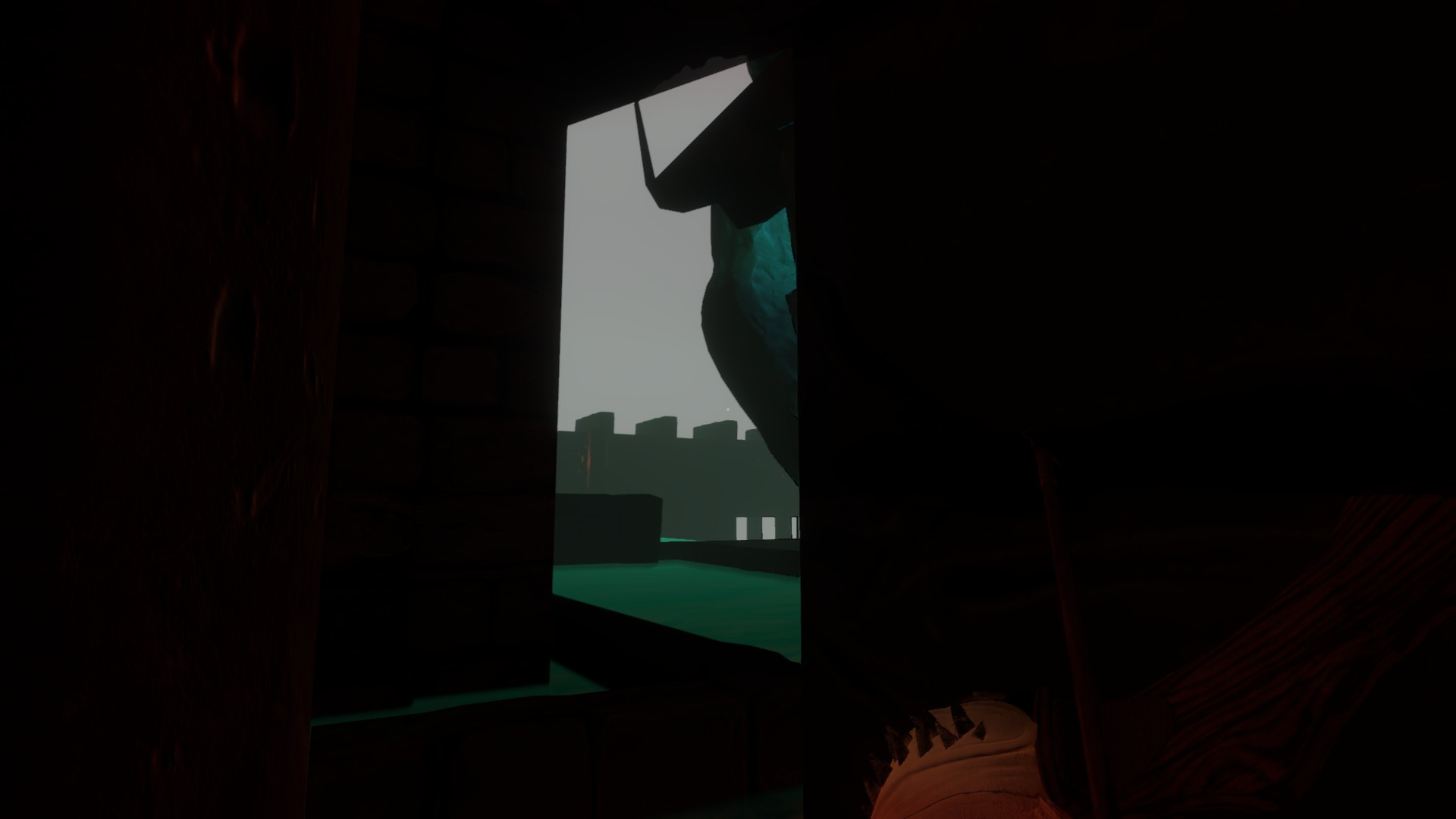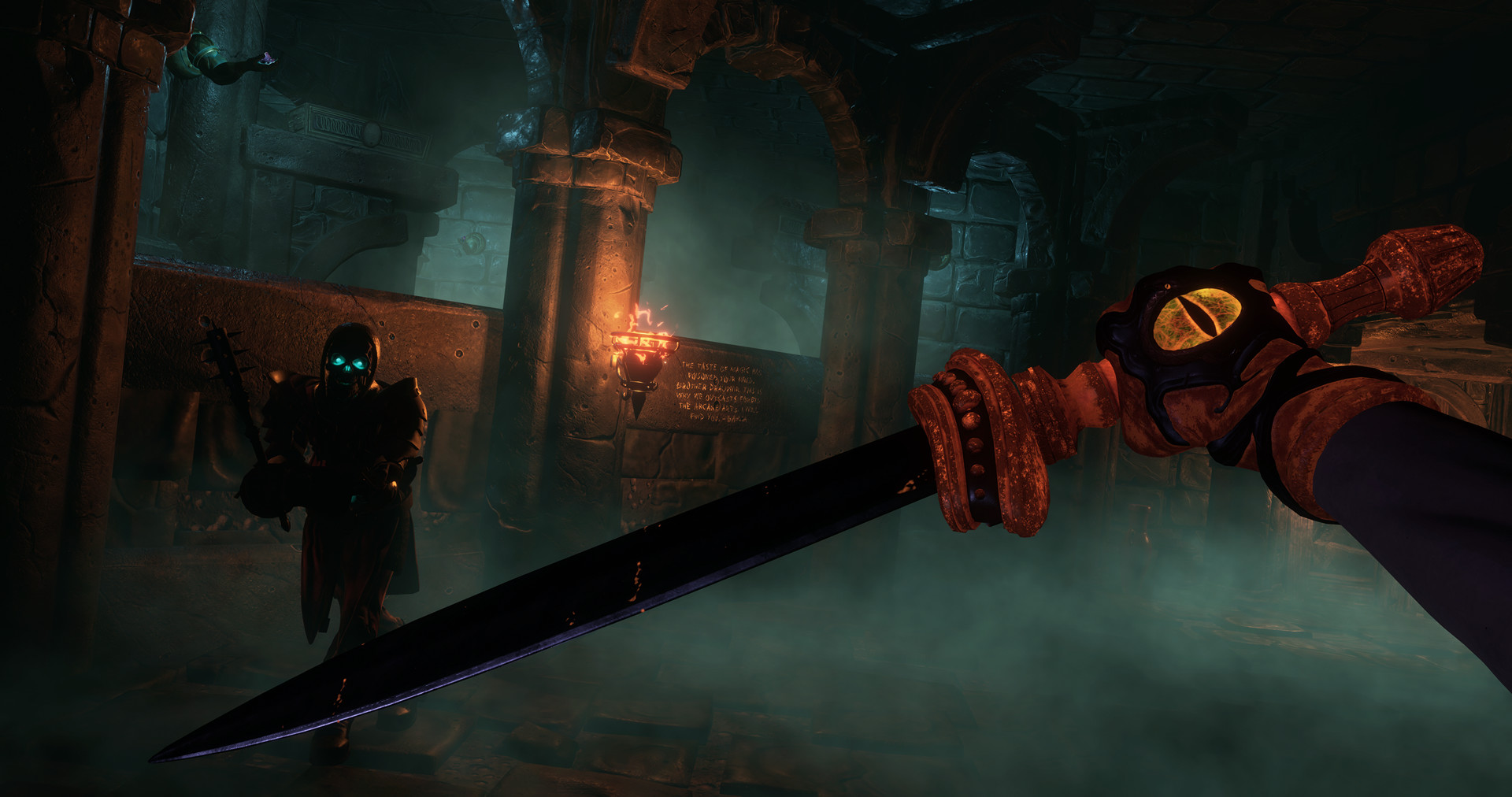Our Verdict
Riddled with bugs and bizarre mechanics, Underworld Ascendant is a bafflingly poor debut from OtherSide Entertainment.
PC Gamer's got your back
What is it? A dungeon crawler from the creators of System Shock, Thief, and the Underworld series.
Expect to pay £25/$30
Reviewed on Intel core i5 3570k, Nvidia GTX Titan, 16GB DDR3 RAM
Developer OtherSide Entertainment
Publisher 505 Games
Multiplayer None
Link Official site
Buy it Steam
Underworld Ascendant is the first game from OtherSide Entertainment. Established by the original founder of Looking Glass Studios, OtherSide is essentially Looking Glass 2.0, employing some of the same designers and seemingly sharing the same ideals about game design. Its legacy includes the likes of Thief, System Shock and of course, Ultima Underworld—three mighty pillars of PC gaming. Just take a moment and think about those games, how massively influential and ahead of their time they were. Imagine what those designers could do with today’s technology and tools.
Now imagine the complete opposite. You’ve just imagined Underworld Ascendant.
There’s no way to sugarcoat this. Underworld Ascendant is phenomenally bad, a catastrophic mess of poor design ideas, woeful execution, and bugs the size of buildings.
Despite sharing the same name and the same setting of the Stygian Abyss, structurally Underworld Ascendant has little in common with its groundbreaking namesake. For those unaware, Ultima Underworld resembled a prototype for a modern Elder Scrolls game. It took place in a seamless open environment, featured multiple factions that you could talk to, entreat with and complete missions for, which could be completed in any order.
Underworld Ascendant isn’t like this at all. Instead, it’s more of a hybrid between Dark Messiah and Thief. You, a dyed-in-the-wool RPG protagonist known as the Ascendant is chosen by a spirit named Cabirus to bring down the evil god Typhon. Achieving this boils down to by tracking down seven Abyssal Keys to unlock a big door, while uniting the game’s three factions in the process.
The game itself is divided into seven large, semi-open levels that are connected via portals. You can’t talk to any characters or factions directly. Instead, you take on missions for them via a notice board in the game’s central hub. There are roughly two main missions per level, along with innumerable side-missions generated by the factions. You can only take on one mission at a time, which means returning to the same levels over and over.
It's a bizarre structure, and nothing like either the original Underworld, or what OtherSide originally pitched in its Kickstarter for Ascendant. That said, different doesn’t necessarily mean bad. As you’d expect from a team with Looking Glass heritage, Ascendant heavily invests in the idea of simulation and creative problem solving. The game features three skill-trees themed around the familiar warrior, mage, rogue trinity, while also emphasising physics and simulation of elements like fire. For example, you can use fire to burn down doors, or disable a trap by shooting a lever with an arrow.
This stuff is hardly cutting-edge, but it is potentially enjoyable. Sadly, it’s let down by, well, everything. Things look iffy from the moment the game opens, when a floating mask representing Cabirus appears from the gloom and starts bobbing around in front of you, its expression resembling one of the old guys from the Muppets. The visual design of Ascendant is generally questionable. Environments are passable, verging on pretty in some places, but in-game objects are weirdly chunky and soft-edged, as if everything’s made of clay.
The character design, meanwhile, ranges from distractingly cartoonish to plain awful. The worst offenders are the Saurians, the lizard-people who act as “mediators” for the conspicuously absent factions. With jerky arms and horribly flapping mouths, the Saurians look like something you’d find in the bin outside the set of Sesame Street.

Descendant
While the look of Ascendant is uneven, far worse is the feel of it. Movement is sludgy and imprecise, as if your character is shackled to a ball and chain. Simply walking down a corridor feels like it requires effort, while climbing up a flight of stairs results in a nauseating juddering of the camera. Later on, traversal involves navigating narrow wooden beams and climbing ropes, which with Ascendant’s ponderous controls feels like riding a unicycle on a high-wire. Trying to jump from platform to rope to platform requires 1996 Tomb Raider levels of accuracy and planning.
As you can imagine, combat isn’t great, although it’s far from the worst thing in the game. Nonetheless, I ended up playing primarily using a blend of stealth and magic, mainly because Underworld’s bow is the one tool in the game that feels good to use (although the water arrows are lacklustre to say the least). Moreover, I was intrigued by the creative potential of the magic system, where you combine runes in your hands to discover different kinds of spells.
Sadly, my arcane ambitions were thwarted by the fact that Ascendant doesn’t tell you what a new spell does. It just labels it “New Spell”, which is fine if the effect is obvious, but less useful when you must also figure out what targets the spell will work on. You can discover spell combinations as you explore, although they’re easy to miss as they’re written on rocks. Everything in Ascendant is written on rocks, another weird decision that seems neat at first but ultimately makes the story more difficult to follow. Another bug meant Ascendant randomly forgot which spells I had learned, so eventually I gave up on using any magic other than Healing and Teleport, because I could remember the rune combinations for them.
Magic isn’t the only unnecessarily obtuse system that Ascendant lumbers itself with. The game doesn’t feature a standard XP system. Instead you unlock skill points by performing “Feats”, which are essentially in-game achievements similar to the Skillshot system in Bulletstorm. Unlike Bulletstorm, however, Ascendant doesn’t provide you with any indication of what might constitute a Feat, so unlocking skill-points essentially boils down to luck. Fortunately, this issue was irrelevant for me because of another bug that worked in my favour, frequently giving me points for feats I had already achieved. At one point, I unlocked the Scholar feat, which I had already achieved several times, for crouching.

The Doom counter system also works poorly. It system tracks how close Typhon is to unleashing his full fury on the Abyss. As the Doom counter ticks up, the landscape of each level becomes more “disrupted”, which is to say they become increasingly covered in lava-spewing fissures like environmental measles. The spawning of these fissures seems entirely random, meaning they appear in the most incongruous of places, while several can erupt right beside one another. It really is like a rash across Ascendant’s level design, unsightly and irritating.
In one level, I pulled a lever attached to a trap and the trap just vanished. In another, an entire castle glitched in and out of existence as I adjusted my perspective on it.
Ascendant’s approach to item and enemy randomisation doesn't work either. The bulky treasure chests spawn their loot the moment you open them, the reveal accompanied by a disappointing emission of sparks. Enemy spawning is random, meaning you have lizardmen patrolling right next to skeletal undead, assassins popping up everywhere before vanishing in a puff of smoke. In one area of Titan’s Reach, there were assassins, skeletons, and lizardmen all dithering around this same flooded room. There’s no craft to the placement and spawning of these things at all.
Things got worse the further I stumbled into the game. Around level 4, I began to experience some astonishing glitches. It started with overlapping textures conflicting and strobing out, after which I encountered dozens of walls improperly lined up, exposing empty skybox behind. Then dead enemies began to flap around and snarl at me when I approached their corpses, while chains dangling from ceilings would judder and spin as if dancing to some unheard tune. The deeper I descended, the more surreal it got. In one level, I pulled a lever attached to a trap and the trap just vanished. In another, an entire castle glitched in and out of existence as I adjusted my perspective on it.
Just a little glitch here. pic.twitter.com/ximrwalk40November 16, 2018
At times Underworld Ascendant becomes so broken that it kind of starts working again. My experience became so beleaguered by bugs and bad design that it forced me to think creatively simply to circumvent the problems. At one point, for example, my arrows stopped working. I would fire an arrow and it would disappear, as if snatched from the air by some invisible bird. Given my entire play style was built around stealth and archery, I had no choice but to complete the level via an alternative approach. In this moment, I realised I was playing some warped reflection of an immersive sim. I was forced to be creative, but for all the wrong reasons.

The developers are currently working to fix the bugs, so some of these points may no longer be relevant by the time you read this. But Ascendant’s flaws run far deeper than even the most spectacular gremlins I ran into. I’m yet to mention the save system, which has you plant a tree in the ground to create a spawn point, while the actual save system only maintains your progress from the start of a mission. That’s right, you plant a tree to not-save. Quicksave was good enough for Dishonored. It was good enough for Thief. Why isn’t it good enough for Ascendant, which couldn’t hold a candle to either of them without setting itself on fire?
I’m genuinely interested to know what happened with this project, why it’s gone so horribly wrong. Not only because I’m a fan of Looking Glass’ work, but also because OtherSide are currently developing System Shock 3. If it’s anything like this, well, let's not think about that too much. Underworld Ascendant is simply terrible.
Riddled with bugs and bizarre mechanics, Underworld Ascendant is a bafflingly poor debut from OtherSide Entertainment.
Rick has been fascinated by PC gaming since he was seven years old, when he used to sneak into his dad's home office for covert sessions of Doom. He grew up on a diet of similarly unsuitable games, with favourites including Quake, Thief, Half-Life and Deus Ex. Between 2013 and 2022, Rick was games editor of Custom PC magazine and associated website bit-tech.net. But he's always kept one foot in freelance games journalism, writing for publications like Edge, Eurogamer, the Guardian and, naturally, PC Gamer. While he'll play anything that can be controlled with a keyboard and mouse, he has a particular passion for first-person shooters and immersive sims.


